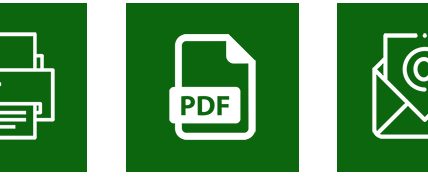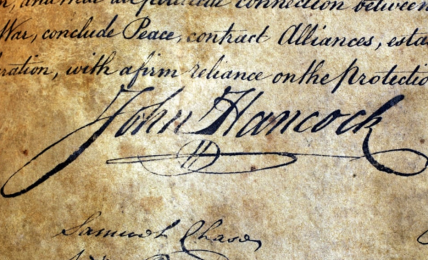Pink is the new green.
Barbie‘s release in theaters this weekend caps one of the most extensive and impressive marketing campaigns in recent memory. Put another way: Rarely does a film turn into a cultural touchstone before it opens in cinemas. Warner Bros.’ Barbie, which brings to life the world’s most famous fashion doll, is on the short list of exceptions.
In marketing circles, there is what is known as “paid media” and “earned media.” A TV spot for a trailer is considered paid media, for example. Earned media can be buzz on social media or publicity.
“One of the things about theatrical marketing is that it has the opportunity to engage the cultural zeitgeist in an exciting way. Everyone wants to be a part of something,” says Warners global marketing president Josh Goldstine, who also did long stints at Universal and Sony. “I’ve probably worked on 250 movies over the course of my career, including Spider-Man at Sony way back in the day. I haven’t felt this kind of electricity in a long time.”
Selling a summer tentpole is more expensive than ever, and more complicated, amid the proliferation of social media and as the box office continues to find its footing following the pandemic. It’s commonplace for a Hollywood studio to spend just as much, if not more, to market an event pic as it does to actually make the movie. The price tag of a global marketing campaign for a big event title is usually $100 million or more.
Then there are promotional partnership deals, which can be worth tens of millions. Barbie has attracted more than 100 such partners. From custom pink Crocs to a Prada clothing line to hair dryers — and everything in between. Merchants and brands rushed to cash in on Barbie mania, while companies including Progressive Insurance and General Motors used Barbie in custom TV and digital advertisements. All told, these partnerships are worth at least $70 million to Warner Bros. and toymaker Mattel, home of Barbie. And the value of the publicity the film has generated is immeasurable, from local TV news spot to features in Architectural Digest and The New Yorker. Stories about Barbie have become ubiquitous.
Barbie is even expected to boost moviegoing overall and help Christopher Nolan’s new film, Oppenheimer, which opens the same day and chronicles the making of the atomic bomb (the contest between the two event films even has its own moniker, “Barbenheimer“). The two films, along with Tom Cruise’s Mission: Impossible — Dead Reckoning, Part One, were the last summer tentpoles to have largely completed their publicity blitzes before the SAG-AFTRA strike commenced and rendered it impossible for stars to promote their movies.
Rival studio executives commend Warners and Mattel for what they say is a marketing campaign for the ages. “Barbie will be very, very profitable,” says one such source, adding that Warners is wisely focusing on the cool and fun factor, versus nostalgia. The source, who pays close attention to tracking, says social media metrics kept showing gains. So did box office projections. When it first came on official tracking, Barbie was pacing for a healthy $80 million opening. By earlier this week, that number had jumped to a huge $110 million. “People go to movies to have fun. They want a ride,” continues the source.
Warner Bros. and its parent company, Warner Bros. Discovery, could use a box office win. This summer’s DC superhero pic The Flash will incur a sizable loss after earning less than $268 million to date at the global box office. Shazam! Fury of the Gods, released earlier this year, was also a major disappointment. If it lives up to the hype, Barbie, which cost $145 million to produce before marketing, could be a huge profit generator for WBD. Just as marketing departments come under scrutiny when a film doesn’t work, so are they commended when there’s a win. “It’s like they saved everything for Barbie,” says another rival marketing executive.
Directed by Greta Gerwig, Barbie, which is rated PG-13, isn’t a paint-by-numbers movie; nor was the campaign crafted by Goldstine and his team. The first teaser trailer, which played before Avatar: The Way of Water over the 2022 year-end holidays, was a parody of Stanley Kubrick’s cinematic masterpiece 2001: A Space Odyssey that replaced the famous monolith with Barbie star Margot Robbie.
The movie’s playful tone came into further focus in early April with the first proper trailer, complete with a viral moment of Robbie’s arched foot stepping out of pink heels. A few weeks later, Ryan Gosling, who plays Ken, appeared onstage at CinemaCon 2023 decked out in a pink blazer. Gosling, who was flanked by Robbie, was the toast of the show, introducing the term Ken-ergy that has become a buzzword. And throughout June, there were Barbie floats in gay pride parades across the country.
“Mattel was just an extraordinary partner in terms of collaboration and allowing us to do stuff that was pretty edgy. We wanted to embrace a campaign that was as bold and exciting as the movie that Greta was making,” Goldstine says.
WBD CEO David Zaslav, like his counterparts at other media and entertainment conglomerates, is keen on synergy as another means to keep marketing costs in check. Various divisions across WBD were part of the “Barbie in the Real World” blitz, including a competition series that featured HGTV talent redesigning a home in various Barbie-inspired rooms from across the decades. There was also a summer baking championship on Food Network, while more than 15 networks across the WBD pantheon featured pink logos and other Barbie on-air graphics.
Initially, neither consumers nor Hollywood insiders knew what to expect from Gerwig’s Barbie. In spring of 2022, Warners revealed a first look from the film at CinemaCon, the annual gathering of theater owners and Hollywood studios in Las Vegas. It showed a smiling Barbie sitting in a pink Corvette.
“We saw how it lit up the internet,” Goldstine says. “It was a very telling moment.”


